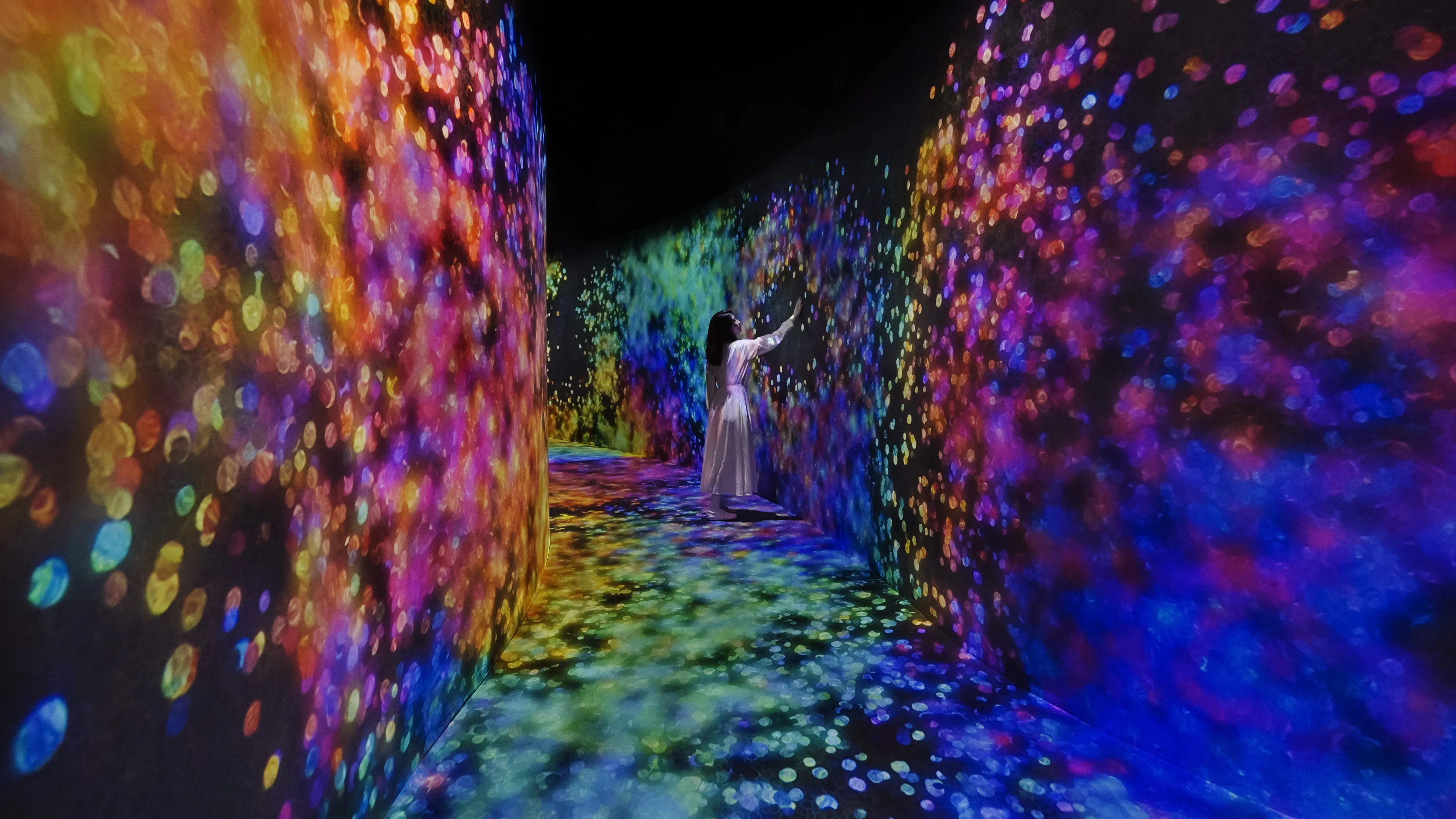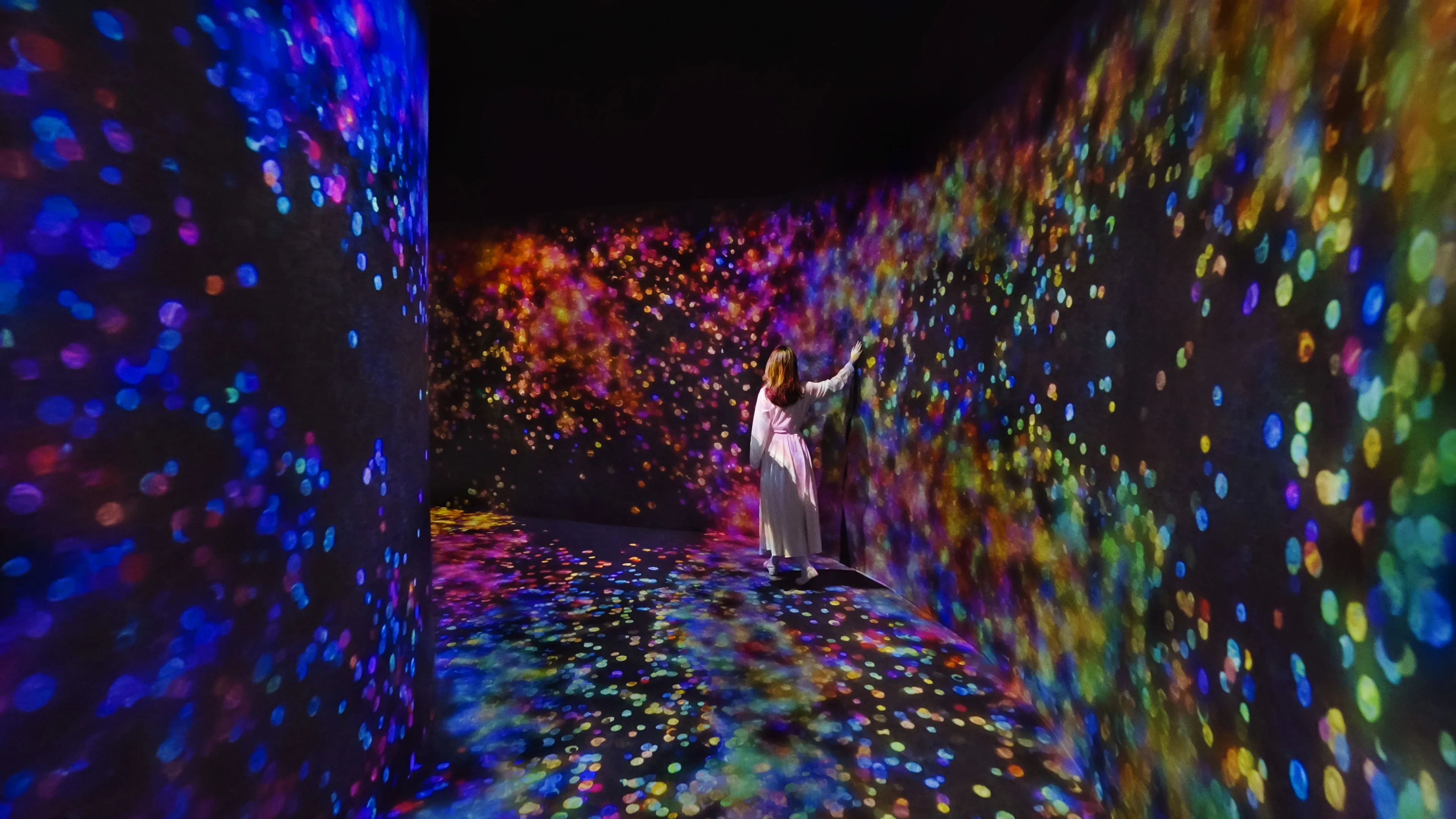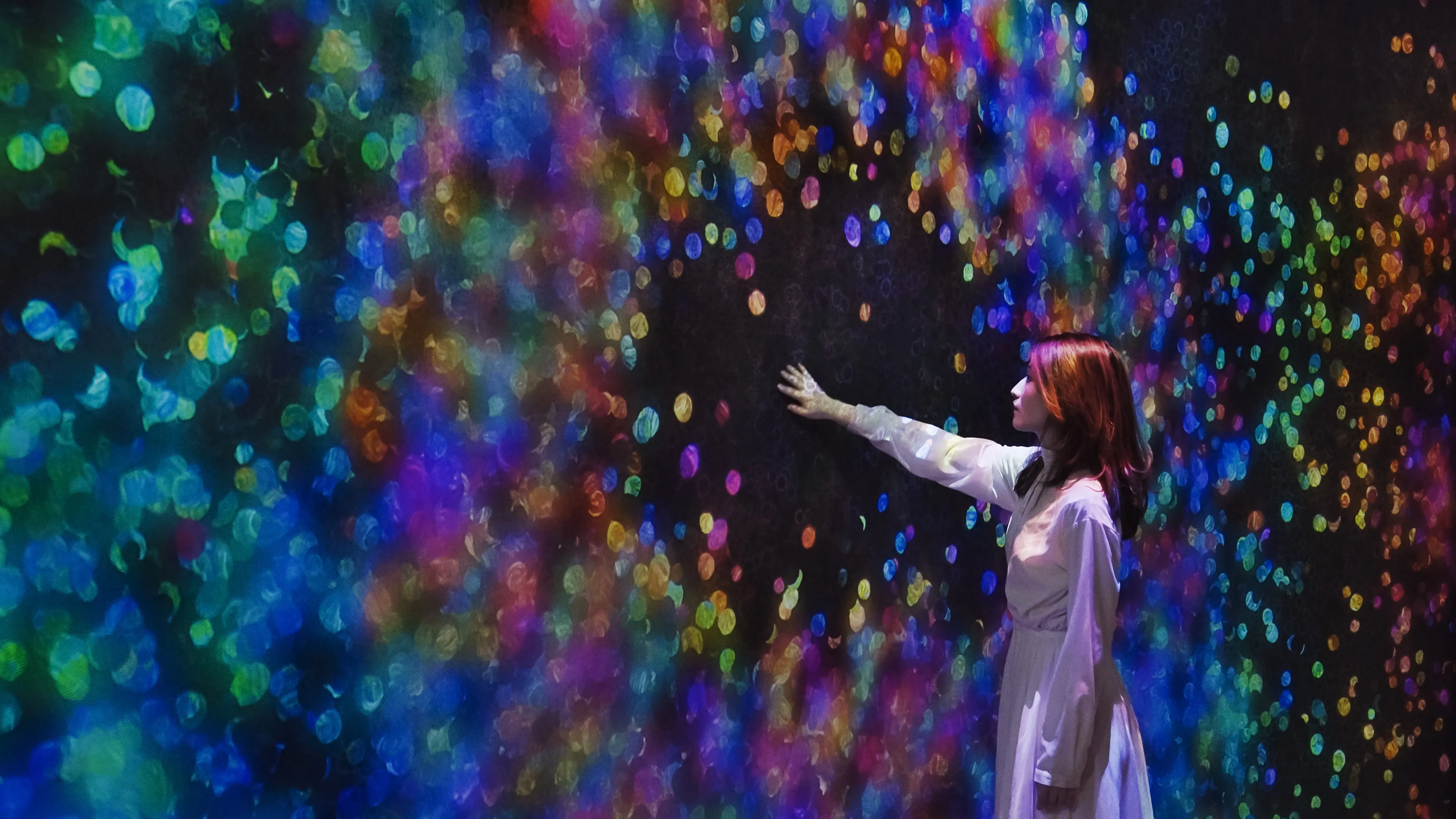

Autonomous Abstraction
Autonomous abstraction.
Each dot of light blinks and changes color in cycles unique to each dot. A spontaneous order phenomenon occurs between dots that are close to each other, and their cycle of hues and the rhythm at which they blink gradually synchronize. When people touch them, the rhythm of the blinking hues change and are randomized, but the dots close to each other once again cause a spontaneous order phenomenon between them.
The dots of lights emit a tone each time they blink. The tones can be heard continuously throughout the space; what sounds like music is solely created by the continuous tones produced by the blinking lights.
People move freely. Depending on their behavior, the dots take on a variety of colors and rhythms, but it is the simple local interactions between the dots that create a time structure, continually bringing order to the colors and rhythm to the entire artwork.
A spontaneous order phenomenon occurs when different rhythms influence each other and synchronize. Examples include when the pendulums of two clocks gradually begin to swing together; when many fireflies gather in one tree and all start blinking at the same time, creating a larger light as a whole; or when the cells that make up the heart synchronize and tremble simultaneously to create the pulse of the heart. This can be seen in various systems, from physical phenomena, neurophysiology, to ecosystems.



